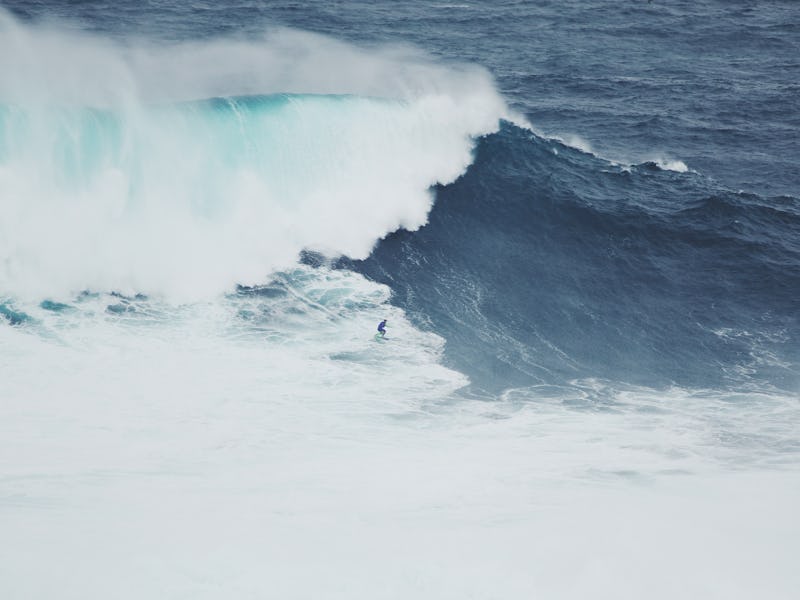Portugal's Cavernous Nazaré Canyon Created the Biggest Wave Ever Surfed
Catch this wave and you’re sitting on top of the world.

Brazilian surfer Rodigo Koxa is riding high. At the World Surf League Big Wave Awards on Saturday, Koxa was recognized for his record-setting descent of an 80-foot wave at Nazaré, Portugal: the world record for largest wave ever surfed.
Along with massive wave hotspots Teahupoo, Mavericks, and Jaws, Nazaré is the one of the best spots for shredding the gnar. On this stretch of the Portuguese coast, a rare union of environmental conditions conspire to create some of the world’s biggest waves. The most important ingredient in Nazaré’s oceanic alchemy is the Nazaré Canyon, which comes closer than one mile to the shore and reaches a depth of around 16,400 feet at its lowest point — 10,000 feet deeper than the Grand Canyon.
Typically, waves slow down and shrink as they approach the coast because the rising seafloor pushes back against the swell. But when the seafloor falls, waves gather more energy as the water rushes to fill the space. When the biggest waves form at Nazaré, it’s a product of two swells — one coming from the canyon and one from the shallower continental shelf — converging and resulting in constructive interference. Essentially, the waves are so big because they are two waves stacked atop one another.
In addition to the canyon, a small channel pushing water outward from the shore augments the already impressive wave height. Add in the Atlantic storms that cause large swells in the winter months, and you have the perfect cocktail for big wave surfing. Most impressively, the waves at Nazaré retain their shape, rolling towards the coast with gargantuan barrels intact rather than devolving into a wall of whitewater.
Prior to Koxa’s 2017 ride, the world record for largest wave surfed was held by Garrett McNamara, who successfully navigated a 78-foot wave at Nazaré in 2011. Portuguese surfer Hugo Vau claims to have broken the record once more by riding a 115-foot wave at Nazaré in January, but the wave height hasn’t been confirmed.
Obviously, there is considerable danger in surfing at Nazaré. Wipeout of the Year award recipient Andrew Cotton was recognized for a spill he took at Nazaré in November that literally broke his back (yet another reason the ocean is terrifying). True to the surfing ethos, Cotton can’t wait to get back in the water.
So if you’re trying to surf Nazaré, make sure to have a jet ski on hand and try not to get pitted.